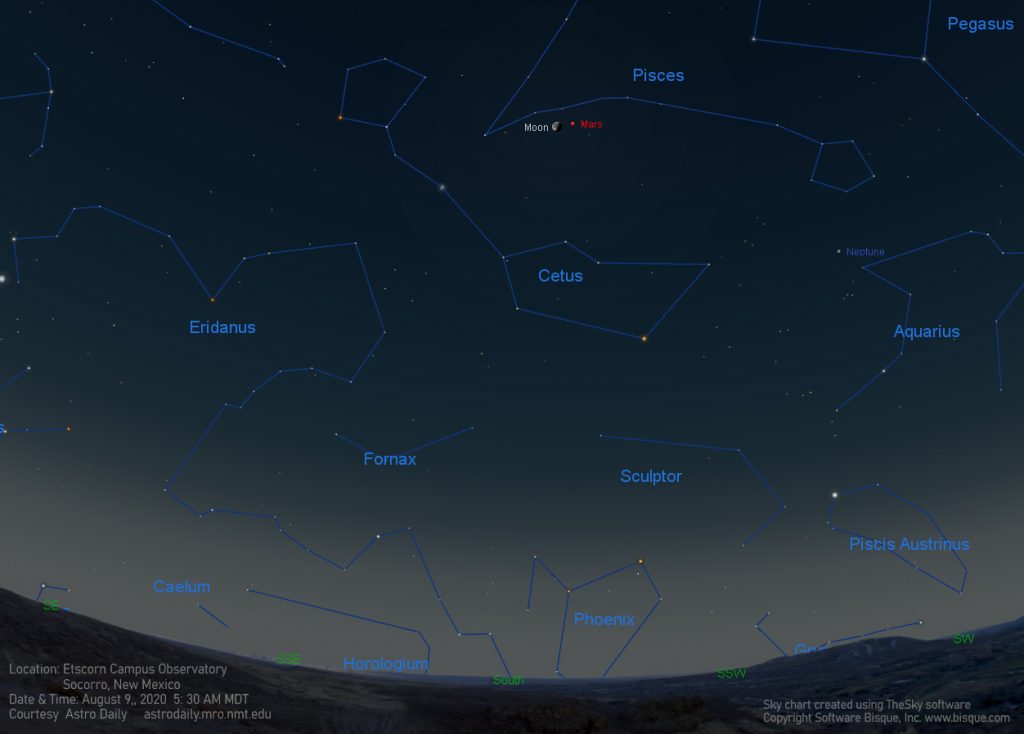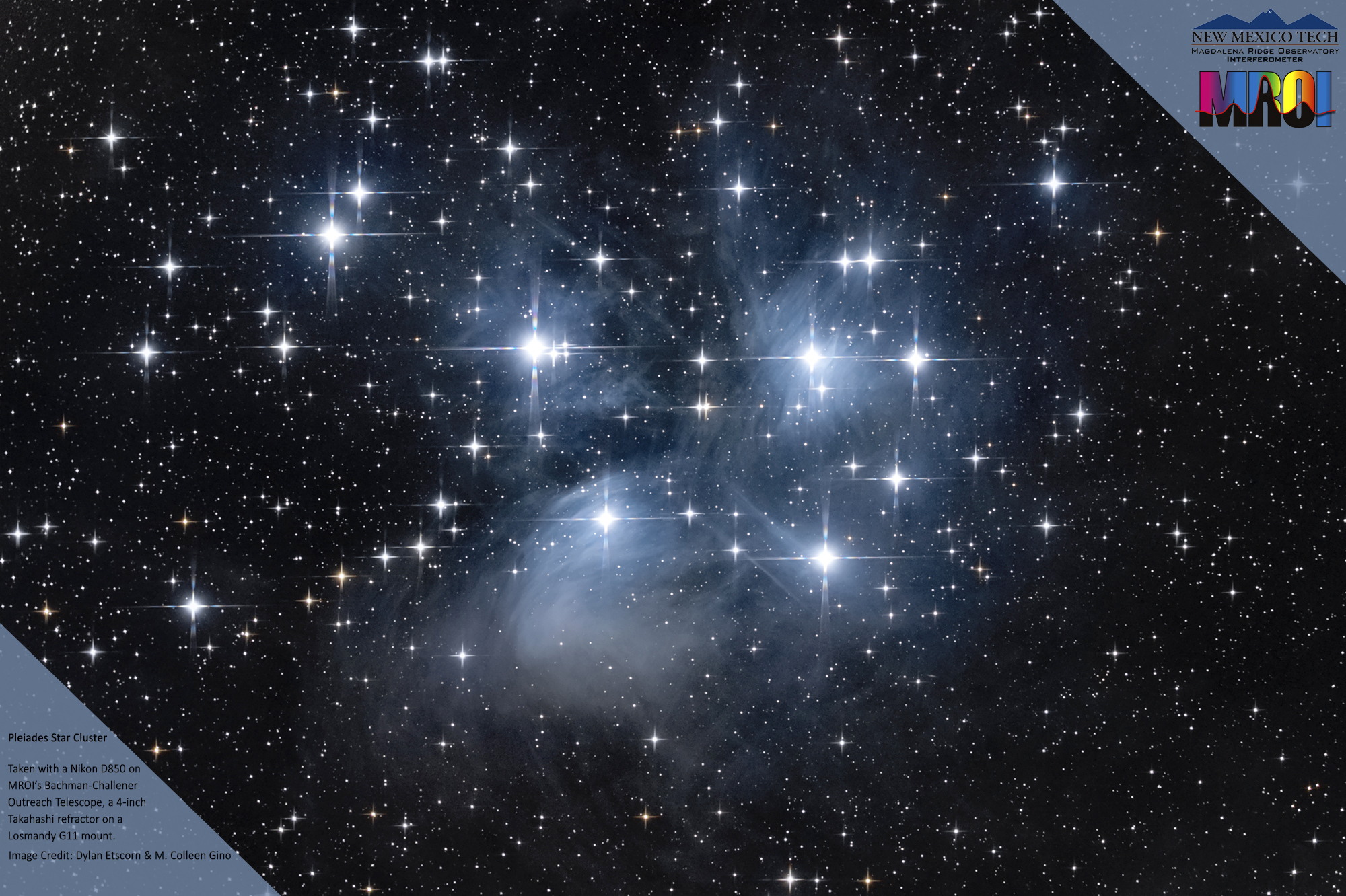On Sunday, August 9, some fortunate folks in dozens of cities spread across South America will have the opportunity to witness a relatively rare occurrence as the planet Mars slips behind one side of the Moon and reappears on the other side about an hour-and-a-quarter later. In reality it’s not Mars playing hide and seek, the Moon is moving between us and Mars as it travels along its orbital path; this is known as a lunar occultation.
Lunar occultations of stars happen fairly frequently, but planetary lunar occultations are relatively few and far between. Unfortunately, those of us in the northern hemisphere won’t see this particular planetary occultation, but we will see a stunningly close encounter of the Moon and Mars with only about 1° separating the pair at our location in Socorro, New Mexico. The sky chart below shows this duo high in the sky toward the south about an hour before sunrise, but you can start observing any time after midnight Saturday night/Sunday morning. While you’re at it, you may catch a glimpse of a few Perseid meteors, which are heading toward their peak on August 11-12 (more on that later).

The next lunar occultation of Mars will occur on October 3, but once again it will only be visible at select locations in the southern hemisphere; we in the northern hemisphere will see another close encounter with about a 2° separation between the Moon and Mars. However, many of us in the southern US including parts of New Mexico, will be treated to a stellar lunar occultation on November 9 in the early morning hours, when the Moon will occult a star in the constellation Leo, Eta Leonis. For details on this and other stellar and planetary occultations, visit the International Occultation Timing Association (IOTA) website.
M. Colleen Gino, MRO Assistant Director of Outreach and Communications
